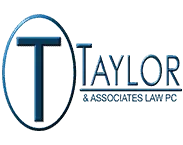November 4, 2024
What Documents Are Required for a Residential Real Estate Transaction? Buying or selling a home is a significant milestone, and understanding the required documents can help ensure a smooth transaction. For both buyers and sellers, a residential real estate transaction involves a variety of legal documents that define the terms of the sale, protect each party’s interests, and ensure compliance with local laws. At Taylor & Associates Law, PC, we assist the Brooklyn public with all aspects of real estate transactions, guiding you through each step with confidence. Essential Documents for a Residential Real Estate Transaction Whether you're the buyer or the seller, here are the key documents you’ll likely encounter during a residential real estate transaction: 1. Purchase Agreement The purchase agreement is a legally binding contract between the buyer and seller, outlining the terms of the sale. This document includes essential details such as the purchase price, closing date, and any contingencies (e.g., home inspection, financing, or appraisal). Both parties must carefully review the purchase agreement, as it forms the foundation of the transaction. 2. Property Deed The property deed is the official document that transfers ownership of the property from the seller to the buyer. At closing, the seller signs the deed to transfer legal ownership, and it is then recorded with the local county clerk or recorder’s office to make it part of the public record. There are different types of deeds, such as warranty deeds and quitclaim deeds, each offering varying levels of protection for the buyer. 3. Title Documents Title documents ensure that the seller has legal ownership of the property and the right to transfer it. As part of the transaction, a title search is conducted to check for any liens, encumbrances, or other issues that may affect ownership. Title insurance is also often obtained to protect the buyer (and lender, if applicable) against future claims related to title issues. 4. Loan Documents (for Buyers) Buyers who finance their purchase with a mortgage will need to complete several loan-related documents. These include the mortgage agreement, promissory note, and various disclosures. The promissory note outlines the loan’s terms, while the mortgage agreement grants the lender a security interest in the property until the loan is repaid. Buyers should review all loan documents carefully and consult with their lender if they have questions. 5. Disclosure Statements In many jurisdictions, sellers are required to provide disclosure statements detailing any known issues with the property. These may include information about structural problems, environmental hazards, or recent repairs. The purpose of disclosure statements is to inform the buyer of the property’s condition and help avoid disputes after the sale. Buyers should review these disclosures thoroughly before proceeding with the purchase. 6. Inspection Report While not always required, an inspection report is highly recommended for buyers. This report provides an in-depth evaluation of the property’s condition, identifying any potential issues with the structure, electrical systems, plumbing, and more. If the inspection reveals significant concerns, the buyer may negotiate repairs with the seller or adjust the terms of the purchase agreement. 7. Closing Statement The closing statement, also known as the settlement statement or HUD-1, is a detailed breakdown of the financial aspects of the transaction. It lists all costs, credits, and payments associated with the purchase, including the purchase price, loan fees, taxes, and closing costs. Both the buyer and seller receive a copy of the closing statement, which they should review closely to ensure accuracy. 8. Homeowners Association (HOA) Documents (if applicable) If the property is part of a homeowners association, the buyer may be required to review the HOA’s governing documents, including bylaws, covenants, conditions, and restrictions (CC&Rs). These documents outline the rules and regulations that apply to properties within the association, as well as any fees or assessments. 9. Property Tax Receipts and Utility Bills Sellers may be asked to provide recent property tax receipts and utility bills as part of the transaction. This helps the buyer understand the ongoing costs associated with the property and ensures that any outstanding balances are settled before the sale. The Importance of Legal Assistance in Real Estate Transactions Completing a residential real estate transaction involves careful attention to detail and thorough review of each document. Even small mistakes or omissions can lead to significant issues later on. Working with an experienced real estate attorney can help protect your interests, avoid potential disputes, and streamline the process. How Taylor & Associates Law, PC Can Help At Taylor & Associates Law, PC, we understand the complexities of real estate transactions and are dedicated to providing exceptional service to the Brooklyn community. Whether you are buying or selling a home, our team can assist you with document preparation, review, and negotiation, ensuring a smooth transaction from start to finish. For trusted guidance on all your real estate needs, contact Taylor & Associates Law, PC today to learn how we can support you through every step of the process.











